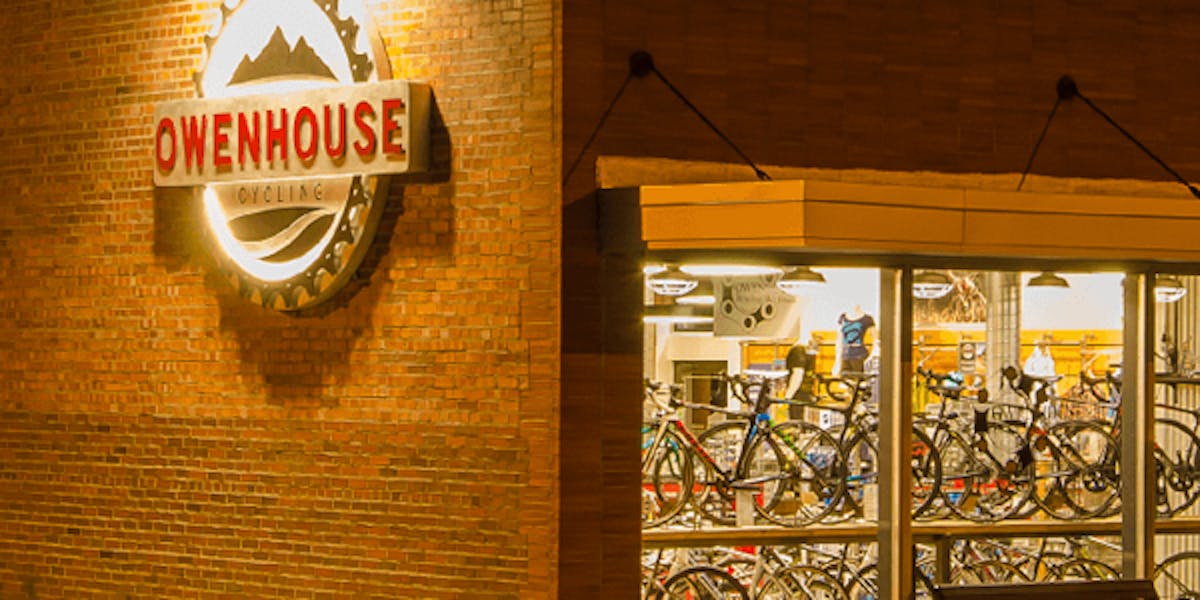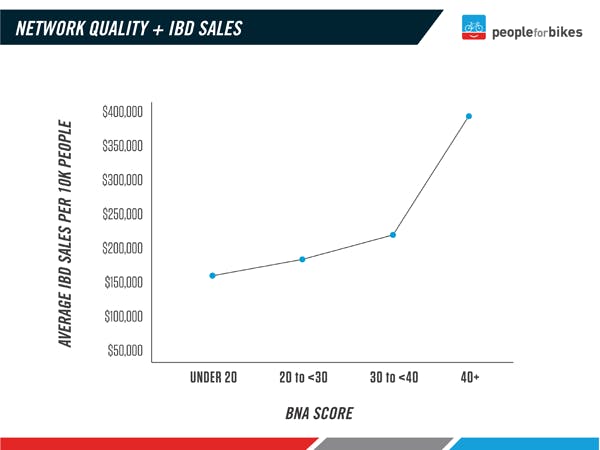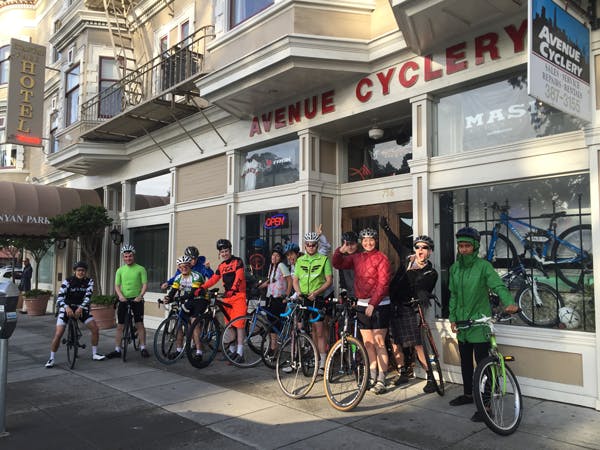How Better Biking Conditions Can Help Bike Shops
By: Kimberly Kinchen

“It is super simple to jump on your bike and literally ride six blocks to downtown,” says Tom Johnson, Shop Manager at Owenhouse Cycling in Bozeman, Montana. He credits a strong downtown, a small urban grid, low traffic volumes, friendly people, and the Gallagator Linear Trail with Bozeman’s easy riding. The shop caters to technical mountain bikers that come for the region’s rugged single-track, but hybrid and commuter sales—including e-bikes in the last year—are brisk, and Johnson attributes that to the town’s bikeability.
Until recently, there wasn’t an easy way to show a direct relationship between good biking conditions and strong independent bike shop (IBD) sales. The launch of PlacesForBikes’ Bicycle Network Analysis (BNA) changes all that. From work to school to market to park, the BNA maps and rates the connectivity of low-stress bicycling routes, scoring towns and cities on how well their networks take people to life’s everyday destinations.

“It’s really the first time we’ve been able to measure the quality of bike networks in a way that is consistent and comparable across the country. So it’s a unique opportunity to see if cities with better bike networks have better bike business,” says PeopleForBikes Research Director Jennifer Boldry. “It was really a quick jump from having the BNA finished and looking at whether there was a correlation between BNA scores and IBD sales in cities.”
And there is. Correlating BNA scores with independent bike shop sales data showed that places with the most comfortable and connected bike networks—those with the highest BNA scores—tend to also be places with the highest average bike shop sales.
Similar to Bozeman, in San Francisco the BNA score is high and sales are strong. Avenue Cyclery general manager Brian Benson says he sees regular proof that the city’s network contributes to the shop’s strong sales. Benson says that experienced cyclists often introduce friends and partners to the city’s bike network, and bring them into the shop. ”They’ll say, ‘Now I know there is a safe route for me to get to work or ride to the beach.'” Benson credits his shop’s emphasis on service and community involvement through advocacy for a lot of its success, but says the network plays a big role. “If it wasn’t for the infrastructure that San Francisco has, there is no way there would be as many bike shops as there are in this city. It’s what allows us to easily work with individuals who are stepping in the door of a bike shop for the first time.”

There is no question in Tom Johnson’s mind that high-quality everyday biking networks are part of the future for bike shops. “As trails expand and roadways start to [include] bike lanes, people will realize that it can be easy to bike,” he says.”I think the infrastructure is going to drive the bike sales more than the bike sales will drive the infrastructure.”
Boldry cautions that the correlation of high BNA scores with sales doesn’t mean there is a cause and effect relationship between better bike networks and bike shop sales. Higher average incomes or stronger political support could be the reason that both are higher in some cities. The current analysis combines BNA scores and retail sales for 300 cities in the U.S., so not all cities are included in the analysis—yet.
An updated and expanded BNA is slated for release this April. Boldry believes that as the BNA is refined and collects more and better data about cities and towns, these conclusions will point definitively to the link between network quality and sales. Boldry points to more conclusive research showing the economic impact of mountain biking trails, and suspects the same fundamental pattern is happening with urban bike networks.
Back in Bozeman, Johnson believes that better bike routes connect directly to the bottom line. “The more systems you have built to make it easier to bike, it’s just going to feed that,” he says. “If a person has a great experience then their friends will buy a bike. Then they’ll buy a better bike. Then they’ll buy maybe two bikes. Then they need more service. So everything ripples back into the shop.”
Related Topics:
Related Locations:
